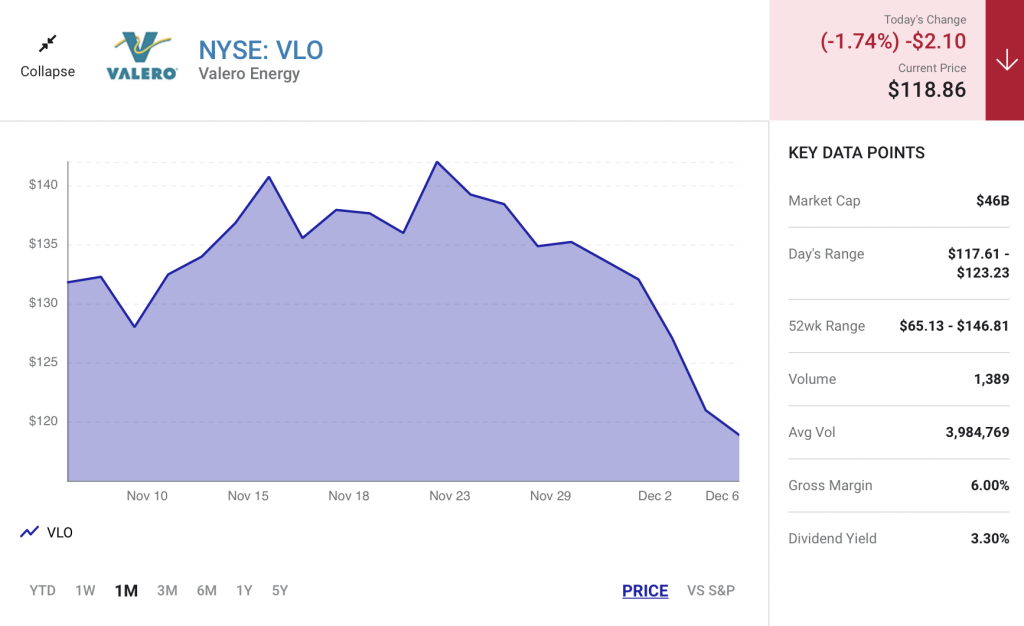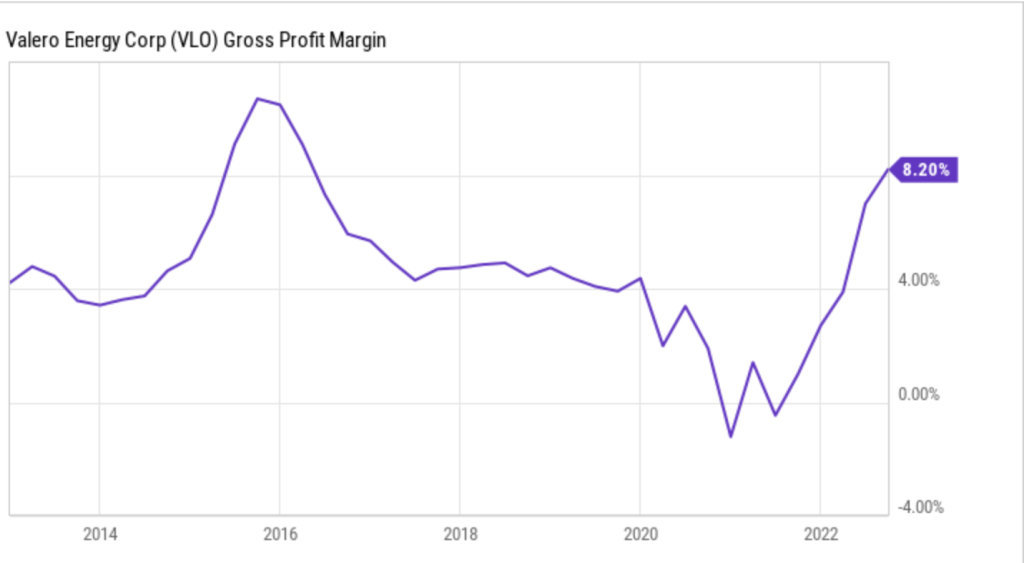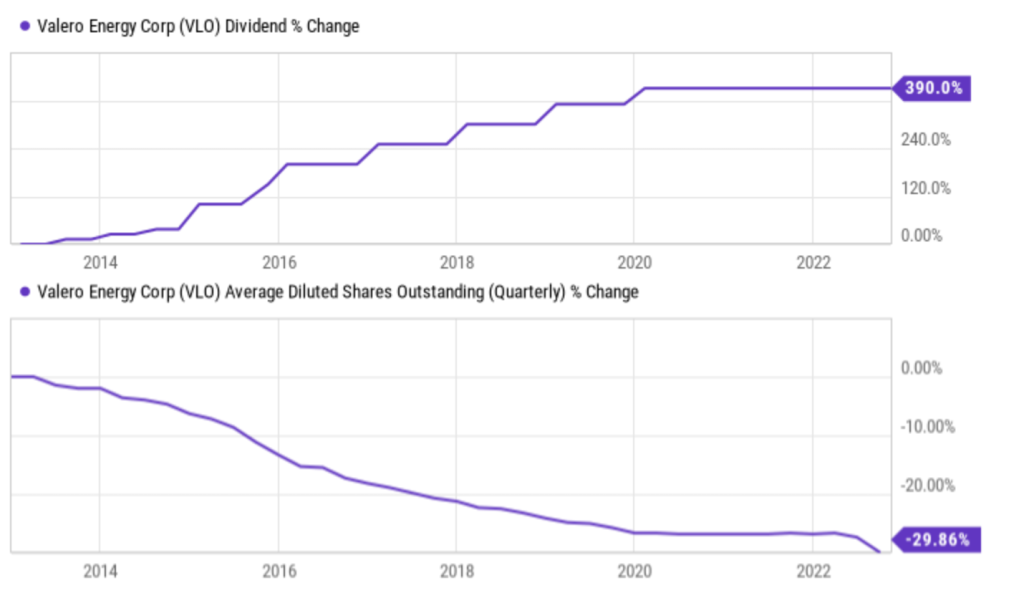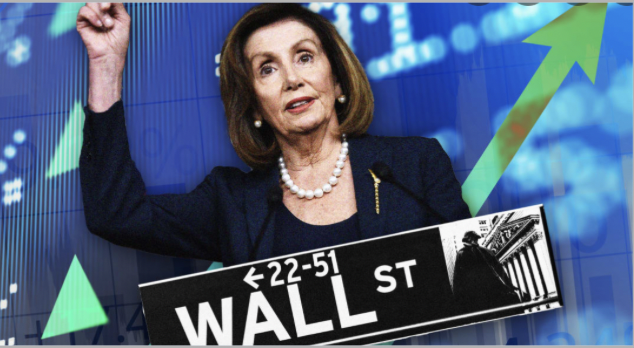Oil refiners are in the sweet spot of the energy industry to generate passive income for investors.
All too often, investors chase the next great idea or the major secular trends in hopes of incredible gains. What so many tend to ignore when pursuing those trends are the tried-and-true investments that consistently generate high returns and reward investors.
There is no passive income powerhouse sector that investors overlook more than oil refining stocks. For decades, top-flight refiners have run laps around the broader market. No company better represents the overlooked opportunity in oil refiners than Valero Energy (VLO -1.74%). Here’s a brief look at why Valero is a stock investors should seriously consider when looking for a decade of passive income for their portfolios.
Don’t be scared of the cycles
Tell me if you’ve heard this before. Whenever a potential oil and gas stock is mentioned, someone always says “oil is cyclical” as a catch-all for why you shouldn’t invest in the sector. Yes, prices can fluctuate and the industry can go through periods of boom and bust. That doesn’t mean all investments in the industry fall prey to these cyclical challenges.

Oil refiners are insulated from the industry cycle because they don’t require the capital spending needed to maintain the business. When properly maintained, a refinery will continue to produce the same volume of product for decades whereas production companies need to spend billions just to offset declines from existing fields.
Refiners are also largely oil price-agnostic. Their profits derive from the difference in price between the crude they source and the products they produce. For what is considered a cyclical business, Valero’s gross profit margins have consistently hovered around 4% for the past decade despite wild swings in oil prices.

The cycle of greater concern for refiners is the global economy. Economic activity and fuel consumption go pretty much hand in hand. Any decline in fuel consumption leads to an oversupplied fuel market. Since refiners rely on high utilization rates to maintain profitability, minor drops in consumption will hit margins.
A business with relatively low recurring capital spending requirements and profits mostly insulated from oil industry cycles generally translates to high rates of free cash flow. Valero, in particular, benefits from these industry traits because it consistently has some of the lowest cash operating expenses and the highest mechanical availability of its peers (mechanical ability means its facilities are down less time for maintenance).
Valero has averaged about $2.1 billion in annual free cash for the past decade, well above the rest of the industry. All that excess cash has been put right to work paying a generous dividend and buying back its stock by the fistful.

Demand still looks strong a decade out for refining
The other catch-all excuse to avoid investing in the oil industry is that electric vehicles are going to eat away at gasoline demand eventually. It’s hard to see the pace of EV sales and deny that as a long-term possibility. That said, oil and gas consumption is projected to remain strong for quite some time, with some calling for the global fleet of internal combustion engine passenger vehicles to peak in 2038 and commercial vehicles many years later. This will inevitably lead to growing fuel demand for at least a decade.
What’s more, the global supply of refining capacity doesn’t appear to be growing fast enough to meet demand. Net new capacity between 2021 and 2023 is only expected to be about 1.1 million barrels per day outside of China. In the U.S. where much of Valero’s refinery capacity resides, refining capacity has decreased by more than 1 million barrels per day since 2020. Tighter regulations and a challenging permitting process have made it extremely difficult to build new refineries. Management is also investing heavily in renewable diesel and other alternative fuels that will likely prolong Valero’s economic viability.
This leaves Valero with little concern of an oversupply of refining capacity in North America for many years, and demand for products remaining robust for perhaps even longer. It may not be a forever investment, but there is more than enough time left for Valero to reward investors before the end of oil.
Overlooked and undervalued
“Oil is cyclical” and “oil’s days are numbered” has weeded out many potential investors in Valero despite its being an excellent operator and a superior wealth compounder. For over a decade, it has generated 8% of its market capitalization in free cash flow. Only the financial sector has generated a better free cash flow yield over that time. Today, Valero’s shares trade at about five times earnings, and its dividend yields 3.1%.
It may not have a huge growth story behind it, but refiners will likely churn out consistent returns for many years. Valero is arguably the best of the bunch and appears it is more than able to generate a decade of high-return passive income for investors that buy into the stock today.
Read Next – “Future Fuel” will unleash $11 trillion wave of wealth
A brand new type of fuel has just been created that could put Tesla out of business.
Forbes, CNN, and Nature Magazine are calling it the “fuel of the future.”
And this “Future Fuel” is set to unleash an energy revolution that Goldman Sachs estimates will be worth $11.7 trillion.
That’s 10X bigger than the electric battery market.
Don’t forget — Tesla has returned 41,405% to shareholders over the last 10 years.
But the amount of wealth up for grabs from the “Future Fuel” revolution could put those returns to shame.
That’s why billionaires like David Shaw and Jeff Yass are pouring hundreds of millions of their own money into this “Future Fuel.”
And top Tesla executives are fleeing the company en masse in order to take part in the “Future Fuel” revolution.
They know what’s coming.
They know that “Future Fuel” will mint an entire new class of millionaires — maybe even billionaires.
And early investors will make an absolute fortune.
All the details of the “Future Fuel” revolution are right here.
See how you could take part in this historic wave of wealth today.





